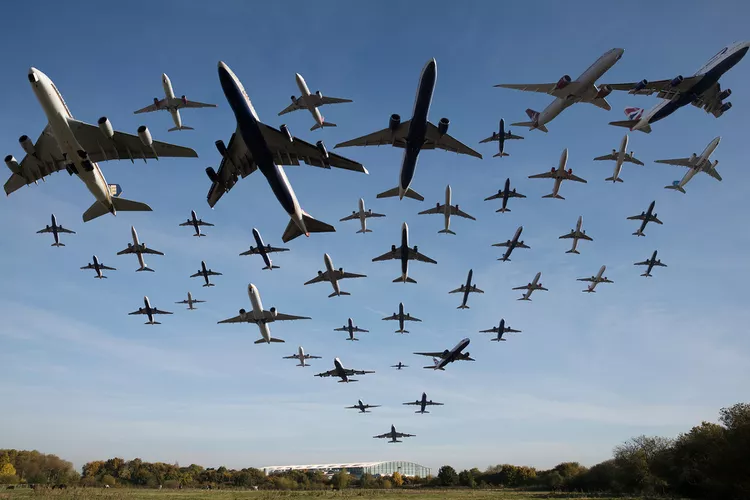Summary
We think it’s pretty safe to say that many travelers have asked themselves at one point or another, “how many planes are in the air right now?” It’s a fair question! Given that every single plane is tracked in some capacity, it’s actually one that can be answered. So we asked the experts at flight-tracking software company FlightAware to help us figure it out.
Why You Should Always Choose a Window Seat on a Plane During Flu Season
So, how many planes are in the air right now?
Back in 2017, FlightAware determined there to be an average of 9,728 commercial airplanes in the sky at any given time. However, that number fluctuates constantly, as planes are nearly always taking off and landing.
Due to the pandemic, there are currently fewer planes in the air. “We tend to see about 10,000 to 20,000 fewer flights per day since the pandemic and into 2021 and 2022,” says FlightAware spokesperson Kathleen Bangs, a commercial pilot and former airline pilot. This represents a reduction of about 10% to 20% from pre-pandemic levels, according to FlightAware data.
Based on these estimates, there are likely between 7,782 and 8,755 commercial planes in the air at any given moment currently.
Moreover, seasonality also plays a role. “Overall, summer months are the busiest for most countries due to a surge in leisure travel, particularly during major holidays and long weekends,” says Bangs. “In the U.S., January typically sees the least travel.”
Furthermore, this doesn’t even take into account other types of flights, such as cargo, military, and private jets. Per FlightAware, commercial aviation comprised about 46.4% of all flights in 2021, suggesting the total number of planes in the air could be as high as 15,500 to 17,500!
How do companies track flights?
Most flight-tracking companies utilize a technology called Automatic Dependent Surveillance–Broadcast (ADS-B) to monitor flights. The majority of planes today are equipped with ADS-B transponders that automatically relay essential data such as location, altitude, and airspeed to air traffic controllers; flight-tracking companies leverage this public data for their systems.
FlightAware, for example, maintains a network of 34,000 ADS-B receivers on the ground worldwide, as well as satellite receivers orbiting the Earth. “We can track flights globally, including in previously inaccessible regions like vast oceans, large deserts, and polar areas,” shares Bangs.
This tracking can pose security challenges for high-profile flights, yet privacy measures exist. “Some military flights are excluded from our data, and many private aircraft—think celebrities, politicians, and large corporations—often pay to conceal their tail numbers or aircraft registrations from the public,” says Bangs. “FlightAware still monitors these flights but can only disclose data upon request from government entities such as the FAA (Federal Aviation Administration) or NTSB (National Transportation Safety Board).”
What are some flight-tracking apps you can use at home?
FlightAware is primarily employed by aviation-related businesses, including airlines and airports, to monitor flights, but consumers can also access its data. Another popular option, especially for aviation enthusiasts, is Flightradar24, and a third is Plane Finder.
All three tracking companies provide both free and paid versions of their services, available on desktop and through mobile apps, with premium tiers offering enhanced data. For instance, Flightradar24 features an augmented reality mode, allowing users to point their camera at an overhead plane to identify its airline, flight number, altitude, origin, and destination.
Additionally, iPhone users don’t even need an app to identify nearby planes. By simply asking Siri, “What planes are overhead?” she will provide a list of available flights in the vicinity.




